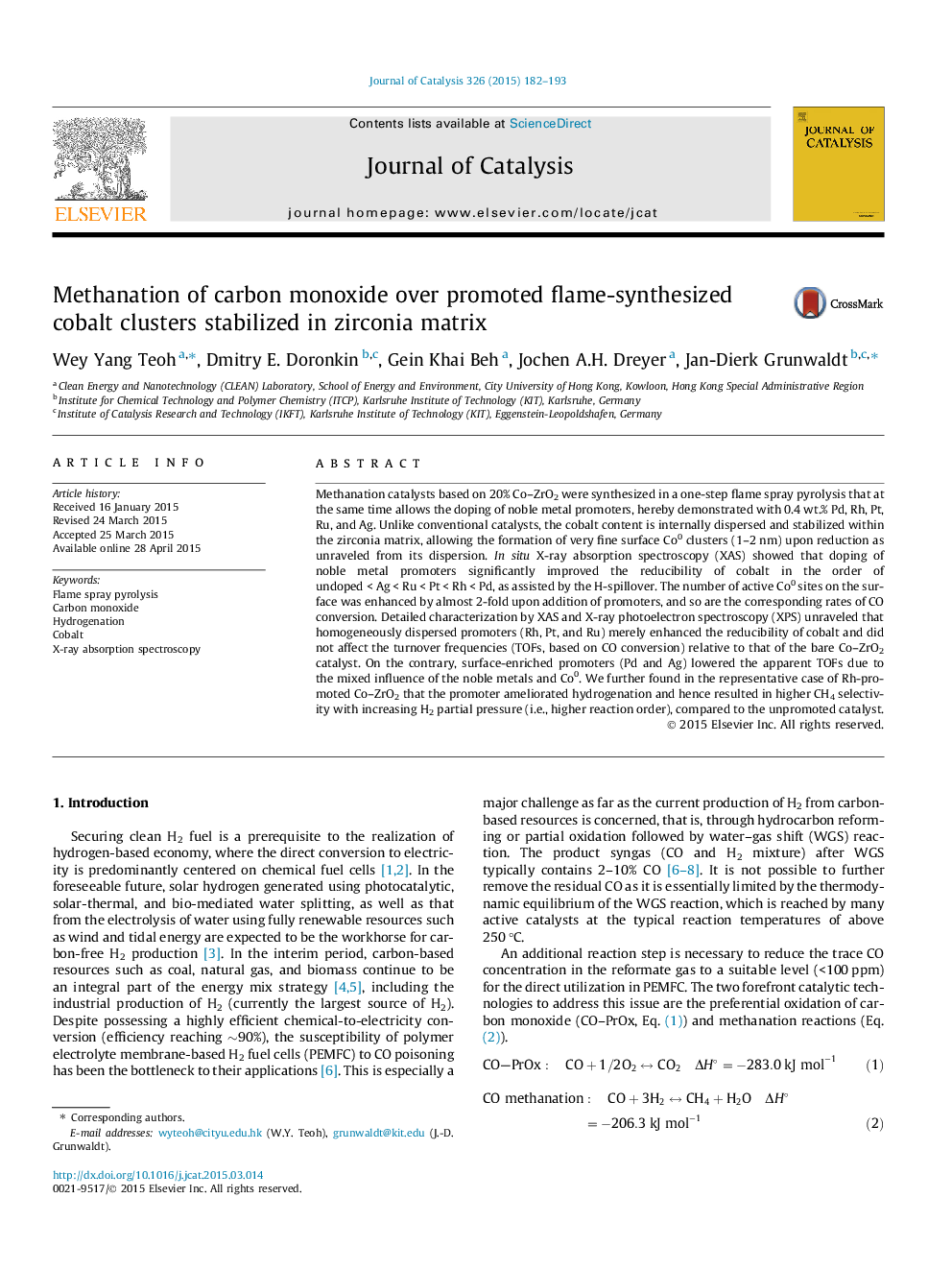| کد مقاله | کد نشریه | سال انتشار | مقاله انگلیسی | نسخه تمام متن |
|---|---|---|---|---|
| 60863 | 47549 | 2015 | 12 صفحه PDF | دانلود رایگان |
• Direct flame synthesis of noble metal-promoted cobalt clusters within zirconia matrix.
• Reducibility of cobalt oxide is directly related to H-spillover effect on noble metals.
• The catalysts exhibit high intrinsic activity in the methanation of carbon monoxide.
• Selectivity is influenced by the morphology/distribution of the noble metal promoters.
Methanation catalysts based on 20% Co–ZrO2 were synthesized in a one-step flame spray pyrolysis that at the same time allows the doping of noble metal promoters, hereby demonstrated with 0.4 wt.% Pd, Rh, Pt, Ru, and Ag. Unlike conventional catalysts, the cobalt content is internally dispersed and stabilized within the zirconia matrix, allowing the formation of very fine surface Co0 clusters (1–2 nm) upon reduction as unraveled from its dispersion. In situ X-ray absorption spectroscopy (XAS) showed that doping of noble metal promoters significantly improved the reducibility of cobalt in the order of undoped < Ag < Ru < Pt < Rh < Pd, as assisted by the H-spillover. The number of active Co0 sites on the surface was enhanced by almost 2-fold upon addition of promoters, and so are the corresponding rates of CO conversion. Detailed characterization by XAS and X-ray photoelectron spectroscopy (XPS) unraveled that homogeneously dispersed promoters (Rh, Pt, and Ru) merely enhanced the reducibility of cobalt and did not affect the turnover frequencies (TOFs, based on CO conversion) relative to that of the bare Co–ZrO2 catalyst. On the contrary, surface-enriched promoters (Pd and Ag) lowered the apparent TOFs due to the mixed influence of the noble metals and Co0. We further found in the representative case of Rh-promoted Co–ZrO2 that the promoter ameliorated hydrogenation and hence resulted in higher CH4 selectivity with increasing H2 partial pressure (i.e., higher reaction order), compared to the unpromoted catalyst.
Figure optionsDownload high-quality image (78 K)Download as PowerPoint slide
Journal: Journal of Catalysis - Volume 326, June 2015, Pages 182–193
